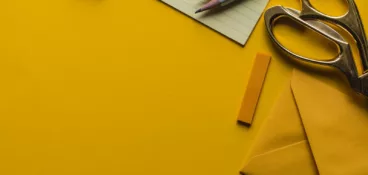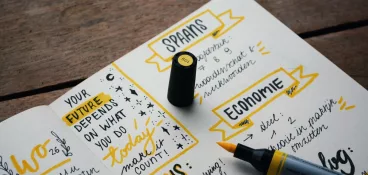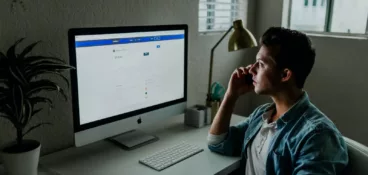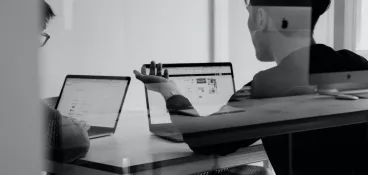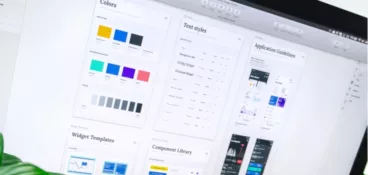Anyone who has ever worked on a design project knows that every billboard, website, or magazine cover we walk by in the street is the work of many people behind the scenes.
Each color, font size, and even the overall look and feel of a piece of design takes days and numerous review rounds to reach the final version. Even if there’s only one out-and-out designer in the process, every comment, conversation, and reference contribute to the end product.
To get a better understanding of what the design collaboration process entails, the benefits of a successful collaboration, and how to build a solid collaborative design process, keep reading.
What is design collaboration?
Design collaboration is the process of multiple stakeholders and teams working together to create, refine, and improve a design project. This collaboration can involve various aspects of design, including graphic design, industrial design, web design, architectural design, and more.
The goal of design collaboration is to get the most out of the collective skills, knowledge, various perspectives, and creativity of multiple participants to deliver the best possible work.
Supercharge your design reviews
Manage every comment, version, and approval in one place with Filestage.
The benefits of the collaborative design process
Though design can seem like a field for itself, it’s actually a highly interdisciplinary profession where human psychology, communication, visual storytelling, and branding play equally important parts.
That’s why there are numerous benefits to turning your design process into collaborative work, instead of relying solely on one person to deliver the whole project.
Here’s a list of the 10 most important benefits of a collaborative design process:
1. Diverse perspectives
Whenever there’s collaboration, there are numerous different perspectives involved. And while this can be somewhat exhausting from time to time, these perspectives bring valuable insights, experiences, and knowledge to the entire project.
This diversity of perspectives can yield creative and unique ideas that lead to more innovative and well-rounded design solutions.
2. Improved creativity
Brainstorming and idea sharing in a collaborative environment stimulates creativity among the team members. When everyone bounces ideas off each other, they can generate new concepts and explore unconventional designs that they would never otherwise think of on their own.
3. Enhanced problem solving
Just think of the time you were working on a project alone and got stuck. Then your colleague said one simple thing and it helped you resolve all your problems. Well, that’s exactly how collaborative problem solving works.
Collaborative creative teams can tackle complex design challenges more effectively. They can organize brainstorming sessions to break down problems into smaller, manageable parts and work together to find solutions.
This collaborative problem-solving often leads to more robust and practical design outcomes. Plus, collaborative teams can solve complex problems faster and with less frustration.
4. Faster iteration
Multiple team members can simultaneously review and provide feedback on design iterations. This accelerated feedback loop allows for quicker revisions and improvements which, at the end of the day, speeds up the design process.
5. Quality control
Collaborative design helps maintain quality control by enabling peer reviews and constructive criticism. Team members can identify and rectify issues early in the process, reducing the likelihood of costly errors or design flaws.
6. Better user-centric design
Collaboration can lead to a design that better meets the needs and preferences of the end-users. By involving individuals with a variety of perspectives, including potential users, designers can create products or experiences that are more user-centric and user-friendly.
7. Knowledge sharing
Team members can share their specialized knowledge and skills to benefit all the design elements. For example, a graphic designer may provide valuable insights into visual aesthetics, while a usability expert can contribute to user interface design. By sharing their expertise with others, team members improve the quality of the design and learn something new from their colleagues.
8. Increased efficiency
Collaboration streamlines the design process by allowing parallel work on different aspects of a project. This can reduce design cycle times and help meet project deadlines more effectively.
9. Stakeholder involvement
Collaboration often involves key stakeholders, such as clients or end-users. Their involvement ensures that the design aligns with their goals and expectations, increasing the likelihood of project success and satisfaction.
10. Continuous improvement
Collaboration encourages a culture of continuous improvement. Your team members learn from each other’s successes and their failures which leads to ongoing skill development and process refinement.
Three examples of design collaboration
There are many examples of design collaboration from which you could learn a lot. And depending on the field you work in, different examples will be more or less applicable in your daily work. To help you get a broader picture of what makes a successful design collaboration, we’ve gathered three common examples.
Here are the examples:
- Website rebranding project
- Feature building
- Magazine cover design
- Label design project
1. Website rebranding project
When companies want to refresh their brand and attract or acquire more business success through their website, they often turn to web redesign. And for any web designer, a whole web redesign project is one of the biggest and most important tasks they can be assigned to do at work.
It’s important to have in mind that the web redesign project is not just about changing the colors and fonts and making your website pretty. It’s about improving the way you communicate a certain product or service, how you want to be perceived when a potential customer enters your website, and ultimately persuading them to stay on your site longer and buy your product or service.
And to make sure you build a beautiful and successful website, you’ll need expertise from multiple teams to come together and work their magic.
Teams involved
- Development team
- Marketing team
- Design team
- C-level or a client
2. App feature building
Another example of an important collaborative web design project is the development of a new feature in a desktop or mobile application. Unlike other types of design that often capture your attention by how beautiful and creative they are, feature design is all about functionality and seamlessness.
When you’re releasing a new feature one of the main goals is to create something that’s easy to use and improves the user experience. To make sure your users adopt the feature, you’ll need a lot of customer input combined with the expertise of developers and designers.
This can come in the form of design thinking or any other methodology that combines human psychology with customer insights and great intuitive designs.
Teams involved
- Design team
- Product team
- Development team
- Customer input
3. Magazine cover design
For anyone working in the world of print design, a magazine cover is a great deal. The cover is your team’s way to attract readers, communicate what’s to be found in the following pages, and a way to display your unique brand.
The design for each magazine cover usually requires a great deal of artistry combined with the commercial aspect of the magazine. That’s why this project gathers professionals from different fields who make sure all the goals are met in a single page.
This example goes to show that without a great photography or illustration team there is no base for your cover, and without great editorial and art teams, your cover may as well remain a blank page.
Teams involved
- Editorial team
- Art and design team
- Photography team
- Illustration team
- Marketing and sales team
- Production team
What it takes to build a collaborative design process
Effective design collaboration doesn’t mean you just put people from different backgrounds and teams together and expect them to master a design project. If you want collaboration to be effective and successful, you and your team need to follow certain steps.
Here are the six necessary steps for establishing a collaborative design process:
- Define objectives and goals
- Assemble the right team
- Establish roles and responsibilities
- Choose collaboration tools and methods
- Create a collaborative environment
- Define the design process
1. Define objectives and goals
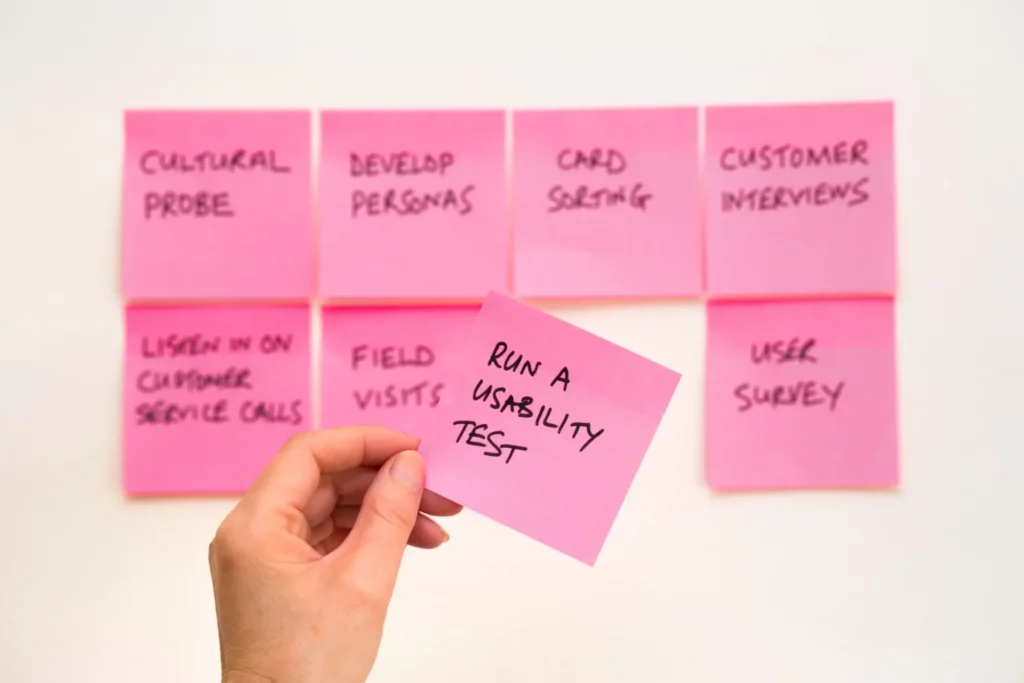
First and foremost, start by defining your goals and objectives for the design project. Understand the problem you’re trying to solve or the outcome you want to achieve. Having a shared understanding of the project’s purpose is essential for future alignment.
Also, once you establish your goals, you’ll have a better understanding of who should be involved with the project. For example, if your goal for the new web redesign is to score more leads, you’ll need your growth team to step in and assist designers along the way. Only by connecting the two you’ll be able to expect some meaningful results.
2. Assemble the right team
Identify and assemble a diverse team of individuals with the necessary skills and expertise to tackle the project effectively. Think about the type of collaboration you’re about to establish. Is it a new brand collaboration, or a cross-team remote collaboration?
Based on your goals, consider including designers, developers, subject matter experts, and other relevant stakeholders.
Plus, make sure to assemble a team with different seniority who will make a cohesive group. This way you’ll be able to establish leadership within the project team and make sure to push the design to completion as effectively as possible.
3. Establish roles and responsibilities
Without a clear understanding of roles and responsibilities, you’ll soon have chaos with everyone asking themselves questions like: “Who should I reach out to for which part of the project?”
To avoid this, clearly define the roles and responsibilities of each team member. You should make sure that everyone understands their contributions to the project and how their work fits into the larger design process.
4. Choose collaboration tools and methods
Select the appropriate collaboration tools and methods for your team’s needs. Make sure that your team members don’t waste time on repetitive and mundane tasks, and establish effective processes with powerful platforms.
At the end of the day, make sure everyone is trained in using these tools effectively.
Here are the tools you should consider using for design collaboration:
- Project management software
- Design approval platform
- Design software
- Communication platforms
- Collaborative whiteboards
5. Create a collaborative environment
One of the most important intangible elements of an effective collaboration is fostering a culture of collaboration within the team. This means that you should encourage open and respectful communication in every part of the project.
You can achieve this by having project managers establish regular meetings, check-ins, and channels for sharing ideas and feedback. Ensure that team members feel comfortable sharing their thoughts and concerns.
6. Define the design process
Outline a clear and structured design process that the team will follow. This process should include stages like research, ideation, prototyping, testing, and iteration. Specify how team members will collaborate at each stage and how feedback will be collected and incorporated.
In this stage you’ll particularly benefit from using a specialized tool to guide your design process forward.
How can design collaboration tools help you establish a successful design collaboration
These days, it’s almost impossible to develop collaborative designs without the help of the right collaboration tools. Collaborative design tools offer your team a range of features that facilitate and enhance the collaborative process, making them vital for your project’s success.
A design collaboration tool like Filestage, brings every file, version, comment, and discussion together in your browser. This allows everyone involved with the design project to deliver better designs and get approval faster.
Here’s a closer look into how Filestage helps you establish a successful design collaboration:
- Streamlined communication – Filestage acts as a digital hub for commuting on content. It provides dedicated spaces for discussions, feedback, and updates, enabling real-time, organized, and transparent interactions. Designers and team members can easily share ideas, resolve issues, and stay informed, regardless of their physical location.
- Version control and iteration tracking – Designers often create multiple versions and iterations of a project. Filestage offers robust version control, recording all changes made to design files. This prevents version confusion and allows your team members to access, compare, and revert to previous iterations as needed. It’s a safeguard against data loss and facilitates collaboration by providing a clear history of design changes.
- Enhanced feedback loop – Design collaboration tools like Filestage incorporate feedback mechanisms such as annotations, comments, and markup tools. These features promote a culture of constructive criticism and collaboration within the entire team. Designers can receive immediate input on their work, iterate quickly, and address issues promptly, resulting in improved design quality.
- File management and organization – Filestage centralizes file storage and sharing in one platform. This minimizes the need for external file sharing solutions and ensures that all team members have access to the latest design files. Organized file management reduces the risk of data loss and confusion.
- Security and privacy – It prioritizes data security and offers user access control, encryption, and secure hosting. This safeguards sensitive design materials and guarantees that only authorized people can access them. Clients and external stakeholders can also engage in the process securely.
- Client collaboration and approval – Filestage offers client-friendly features that simplify the review and approval process. External stakeholders and clients can view, comment on, and approve designs directly within the platform. This streamlines client collaboration speeds up feedback cycles, and improves overall client satisfaction.
Final thoughts
Developing great design concepts and turning some of the wildest design ideas into real-life projects can be a long and demanding process. To make sure that all your team members feel supported every step of the way, and that they only develop the best ideas, it’s good to transform that process into a collaborative environment.
Check out how Filestage can help your cross-functional teams reach a high level of collaboration and deliver great projects by starting a free trial →


